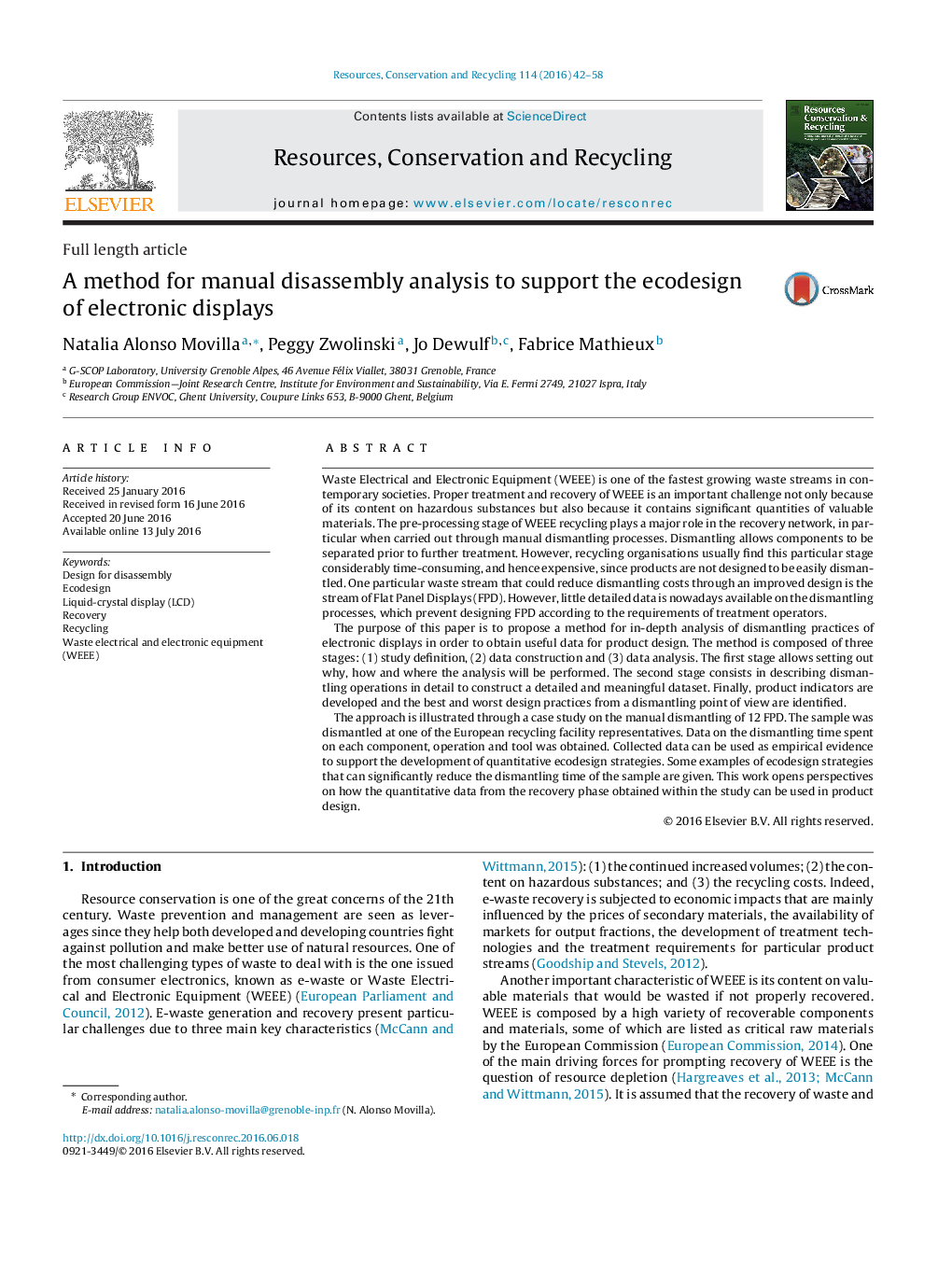| کد مقاله | کد نشریه | سال انتشار | مقاله انگلیسی | نسخه تمام متن |
|---|---|---|---|---|
| 1062661 | 1485677 | 2016 | 17 صفحه PDF | دانلود رایگان |
کلمات کلیدی
1. مقدمه
2. اطلاعات پایه ای در نمایشگرهای الکترونیک
2.1 ترکیب LCD ها
2.2 پیش پردازش LCD
3. بررسی مقالات
3.1 اصطلاحات مرتبط با تفکیک موجود در مقالات
3.2 مطالعات صورت گرفته در زمینه ی آنالیز تفکیک ال سی دی
4. ارائه ی تئوری روش مدنظر
5. اجرای روش: به دست آوردن شاخص های مربوط به توانایی جداسازی برای نمایشگرهای الکترونیکی
5.1 مرحله 1: تعریف مطالعه
5.1.1. انتخاب سناریوی بازیابی
5.1.2.انتخاب شاخصه های عملکرد
5.1.3 انتخاب روش جمع آوری داده ها
5.1.4 تعریف ویژگی های نمونه
5.2 مرحله 2: شکل گیری داده ها
5.2.1 تعریف طرح برنامه نویسی
5.2.2. انتخاب ابزار تفسیر
5.3. مرحله 3: تجزیه و تحلیل داده ها
5.3.1. توسعه ی شاخص های مرتبط با توانایی جداسازی
5.3.2. شناسایی بهترین و بدترین شیوه های طراحی
6. بحث
7. نتیجه گیری و چشم انداز ها
شکل1. طرح ساختاری معمول CCFL LCDs. دارای تغییرات ( (Elo و Sundin, 2014a).
جدول1. بررسی مقالات موجود در رابطه با فرایندهای دستی تفکیک.
جدول2. طبقه بندی اصطلاحات مورد بررسی در زمینه ی تفکیک دستی
شکل2. مراحل و روند موجود در روش آنالیز تفکیک.
جدول3. آنالیز مطالعات فعلی در رابطه با زمان تفکیک LCD های ارائه شده در یک روند تاریخی.
جدول4. نمونه LCD های انتخابی برای تفکیک در امکانات اپراتور تیمار.
جدول5. طرح پیشنهادی برنامه نویسی برای عملیات های تفکیک دستی در بازیافت LCD ها. طبقه بندی، تعریف و نظرات.
جدول6. آمارهای پایه ای در زمان صرف شده برای تفکیک هر یک از اجزاء.
جدول7. آمارهای پایه ای در زمان صرف شده برای تفکیک هر یک از عملیات
شکل3. زمان تفکیک CCFL LCDs براساس اندازه، جرم و تاریخ توزیع آن ها. مقایسه با نتایج قبلی حاصل از تحقیقات آردنته و همکاران در سال 2014.
شکل4. توالی معمول تفکیک CCFL LCDs و مخازن مربوط به بخش های خروجی مختلف. زیر بخش های هدف ( موارد خطرناک و ارزشمند) خط کشی شده و مورد تأکید قرار گرفته است.
شکل5. درصد میانگین زمان صرف شده در هر بخش. گروه های رنگی اشاره به دسته جات مختلف دارد: مراحل پیش از تفکیک، حین تفکیک و پس از تفکیک، تحت تأثیر طراحی محصول یا اپراتور تیمار قرار می گیرد.
شکل6. درصد میانگین زمان صرف شده در هر عملیات. گروه های رنگی اشاره به دسته جات مختلف دارد: مراحل پیش از تفکیک، حین تفکیک و پس از تفکیک، تحت تأثیر طراحی محصول یا اپراتور تیمار قرار می گیرد.
جدول8. آمارهای پایه ای در رابطه با زمان صرف شده برای هریک از ابزارها.
شکل7. درصد میانگین زمان صرف شده برای هر یک از ابزارها.
شکل8. مقایسه ی زمان تفکیک میان ID9-ID10, ID9- ID11 و ID9- ID12.
جدول9. لیست بهترین شیوه های طراحی موجود در نمونه از نقطه نظر تفکیک.
جدول10. لیست بدترین شیوه های طراحی موجود در نمونه از نقطه نظر تفکیک.
• A method for in-depth analysis of the dismantling of electronic displays is proposed.
• A coding scheme is developed to describe dismantling operations.
• Detailed dismantling time spent on the components of 12 LCDs is obtained.
• The best and worst design practices from a dismantling point of view are identified.
Waste Electrical and Electronic Equipment (WEEE) is one of the fastest growing waste streams in contemporary societies. Proper treatment and recovery of WEEE is an important challenge not only because of its content on hazardous substances but also because it contains significant quantities of valuable materials. The pre-processing stage of WEEE recycling plays a major role in the recovery network, in particular when carried out through manual dismantling processes. Dismantling allows components to be separated prior to further treatment. However, recycling organisations usually find this particular stage considerably time-consuming, and hence expensive, since products are not designed to be easily dismantled. One particular waste stream that could reduce dismantling costs through an improved design is the stream of Flat Panel Displays (FPD). However, little detailed data is nowadays available on the dismantling processes, which prevent designing FPD according to the requirements of treatment operators.The purpose of this paper is to propose a method for in-depth analysis of dismantling practices of electronic displays in order to obtain useful data for product design. The method is composed of three stages: (1) study definition, (2) data construction and (3) data analysis. The first stage allows setting out why, how and where the analysis will be performed. The second stage consists in describing dismantling operations in detail to construct a detailed and meaningful dataset. Finally, product indicators are developed and the best and worst design practices from a dismantling point of view are identified.The approach is illustrated through a case study on the manual dismantling of 12 FPD. The sample was dismantled at one of the European recycling facility representatives. Data on the dismantling time spent on each component, operation and tool was obtained. Collected data can be used as empirical evidence to support the development of quantitative ecodesign strategies. Some examples of ecodesign strategies that can significantly reduce the dismantling time of the sample are given. This work opens perspectives on how the quantitative data from the recovery phase obtained within the study can be used in product design.
Journal: Resources, Conservation and Recycling - Volume 114, November 2016, Pages 42–58
